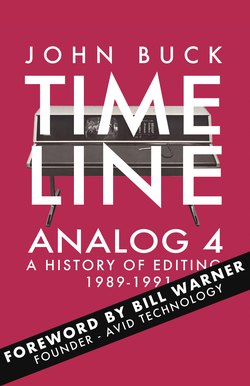Читать книгу Timeline Analog 4 - John Buck - Страница 16
На сайте Литреса книга снята с продажи.
THE MOLINARIS
ОглавлениеNot far from Avid’s factory office, Data Translation (DT) was already a specialist in data acquisition for customers who required accurate, real-time measurement of analog signals. It sold over a hundred different products that were primarily used inside IBM PS/2 machines for the science and industrial markets.
Tony Molinari recalls:
One was the Data Acquisition Group which was basically creating modules that translated analog signals to digital whether it was thermocouples or any form of analog data and the other division was the Imaging Group, which was more for things like machine vision, medical imaging and scientific imaging.
Data Translation was becoming increasingly successful because it adapted general hardware technology that it built in house into niche products for specific industries. Engineer Ned Kroeker recalls:
By this stage our Imaging Group had developed everything from 8bit boards with low resolution right through to higher resolution boards, as well as line scanning products.
DT encouraged third party software companies like Automatix Inc. in nearby Billerica to write programs for its hardware. Once complete it bundled the PC add-in boards with the third party apps and marketed the complete product to specific groups.
The young product manager charged with marketing the new DT card with Automatix’s Image Analyst program was John Molinari, son of the company's founder. In time, Molinari became the champion of video editors everywhere but for the moment his audience was meteorologists, scientists, industrial engineers and researchers.
While DT had previously discounted the abilities of Apple’s computers to house its products, several technology shifts occurred to change its position.
First came the release of the Macintosh II with NuBus technology that made Apple's computers were better placed to handle the demands of video throughput.
Ned Kroeker recalls:
I had been involved, on the periphery with NuBus at MIT and the commercial release of NuBus had provided personal computers with a much higher bandwidth capability, a much more efficient bus mastering capability than the PC. So we started looking at what we could build with that.
